This is the final post of the whirlwind tour my parents, Anna and I took last week.
In this post, we will go to the American military cemetery in Luxembourg followed by a tour of the forests around Bastogne to see the sight of the Battle of the Bulge. Finally, we finished the tour with a visit to the picturesque village of Bruges, Belgium and a short stop by the North Sea.
We started with a visit to an American military cemetery. It is one of 24 American overseas cemeteries that are the final resting places for 124,913 Americans killed in warfare (WWI, WWII and the Mexican War). This particular one is just outside of Luxembourg City. It is just over 50 acres and serves as the final resting place for 5,076 soldiers, sailors, marines and airmen and was established on 29 Dec 1944, while the Battle of the Bulge raged nearby.
It is interesting to note that the land for all the cemeteries has been given back to the US. All these military members are buried in American soil. Also, this location was the headquarters of General George S. Patton Jr’s Third Army. In fact, the General is also buried here. Although he was killed in a vehicle accident shortly after the war’s end, he is buried in a place of honor with the many other members of the third army. Here he is…
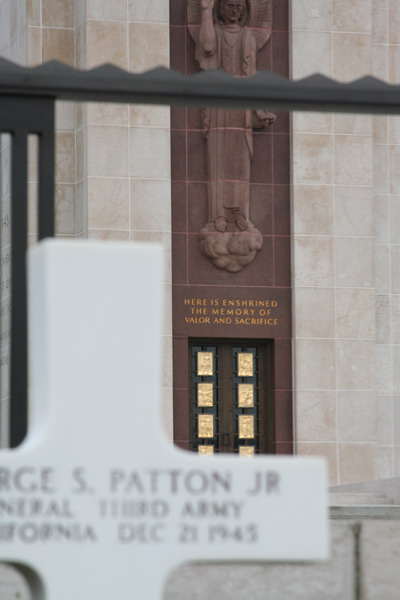
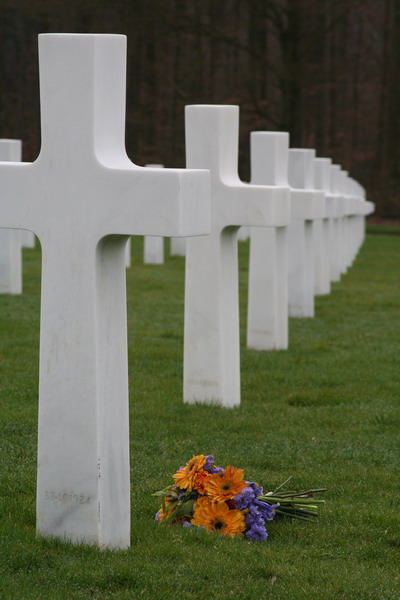
There are number of these poignant reminders of the horror of war scattered through the cemetery.
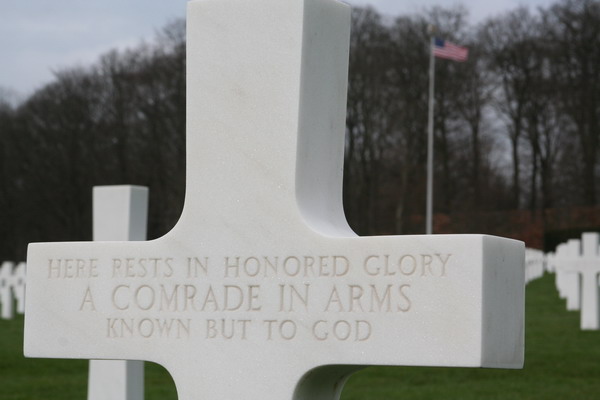
After our tour of the American cemetery, we drove up the road to the center of the Battle of the Bulge. Of you’re not familiar with this battle (and no it’s not a reference to the collective growing American waistline), here’s a brief rundown. On 16 December 1944, the German army on Hitler’s orders made one final push to repel the Allied advance on the west. His belief was to slow the western front would allow him time to build his super weapons (jet planes and super heavy tanks, for example). Initially, the German offensive was very successful and indeed it was the single most costly American engagement of WWII. Over 19,000 Americans lost their lives, however, it was the turning point in the European campaign. It signaled the beginning of the end and although it was a temporary setback for the allied army, it was a decisive blow to the German military machine.
Here in Bastogne, the German cemetery is a very poignant site to see. It is set with trees throughout and each headstone lists six names (three on each side). This is in stark contrast to the one on each American headstone.
After, we traveled to the forests around Foy (a small town outside of Bastogne). This is also the region where Easy Company of “Band of Brothers'” fame fought over Christmas in 1944. It was incredible to actually walk though the forest and see where these men dug in to repel the attacking forces. The 101st Airborne (of which Easy Company was a part) was cut off in the Battle of Bastogne (part of the larger Battle of the Bulge) after the initial battle. In fact, the German Army commander felt he had effectively cut off all options for the Americans in Bastogne. They were outnumbered, with limited ammunition, and little winter clothing. The German commander asked the American commander, Brig Gen McAuliffe, to surrender. The General, in typical American fashion, replied “Nuts!” This didn’t translate very well (in fact, it’s a phrase not used today, but as far as I can tell, it means “you’re crazy”), so his translators just used the term, “Go to hell!” This simple and direct phrase was echoed throughout the regiment and gave the men great strength.
While the trees were probably replanted after the war, this is probably similar to how the area looked when Easy Company dug in to fend off the advancing enemy.
The men of easy company were immortalized in Stephen Ambrose’s novel “Band of Brothers” which was later made into a highly acclaimed HBO mini-series (it won the Emmy for outstanding mini-series). Tom Hanks and Stephen Spielberg co-produced them. Afterward, the Hanks family, HBO and the Jeep corporation donated this monument to the men of Easy Company.
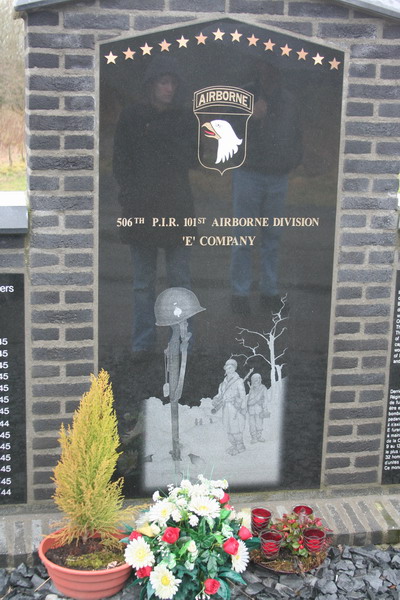
There is also a powerful museum in Bastogne dedicated to the battle.
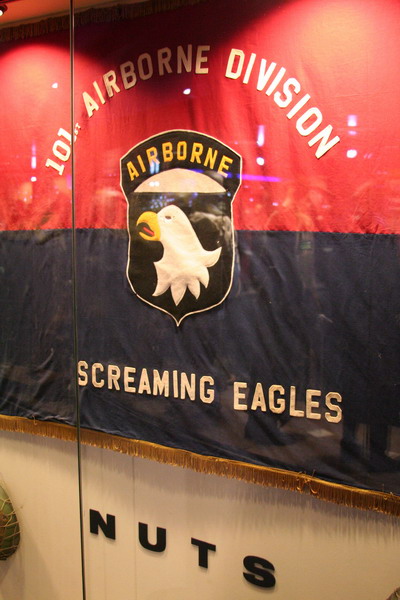
It was a great opportunity to see first hand just what happened over 60 years ago.
Next stop was the beautiful Belgian city of Bruges. This city is a very popular tourist destination (for good reason). Our first sight was the Church of Our Lady that houses a statue carved by the venerable Michaelangelo. This is one of only a few of his statues outside of Italy.
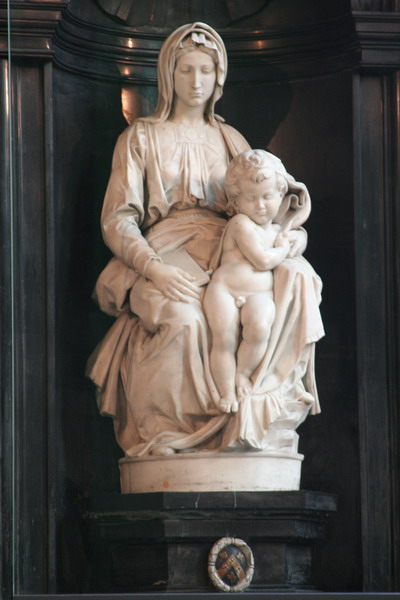
The rest of the church was quite spectacular as well.
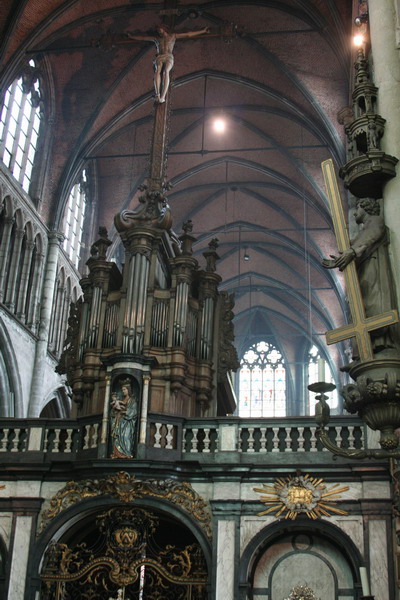
There was a moat that surrounded the medieval city that is visible today.
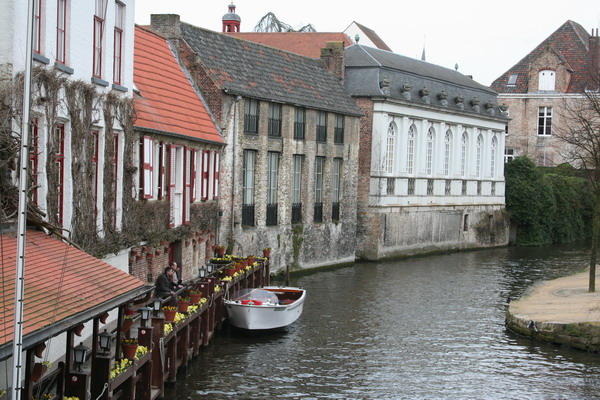
As you can imagine, Belgian waffles originated in Belgium, so they are available pretty much anywhere. However, something that may be interesting is that there are two types of waffles (or gauffres), the “Belgian” with it’s rectangular shape associated with Brussels and the Liege version (associated with that city). You can see here the Liege version with thick dough and irregular shape. These are not eaten for breakfast, but as a snack through the day and not with utensils (it’s finger food).
The famous bell tower afforded a great view of the city.
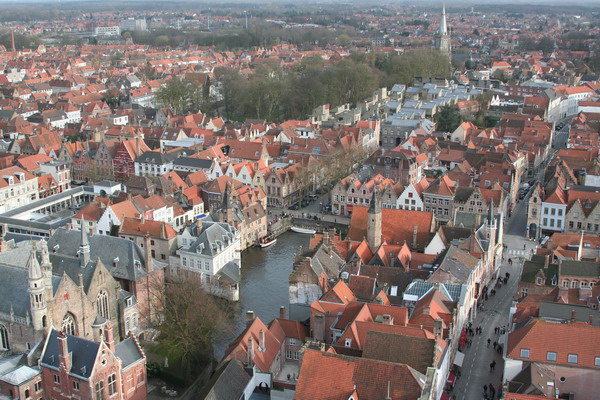
The other Belgian delicacy is of course chocolate. There are no shortage of shops that sell truly delicious treats. This particular one came highly recommended and did not disappoint…
Dinner that night was also delicious. My father enjoyed the traditional menu of mussels and fries (which is also originally Belgian) and the rest of us had similarly great meals.
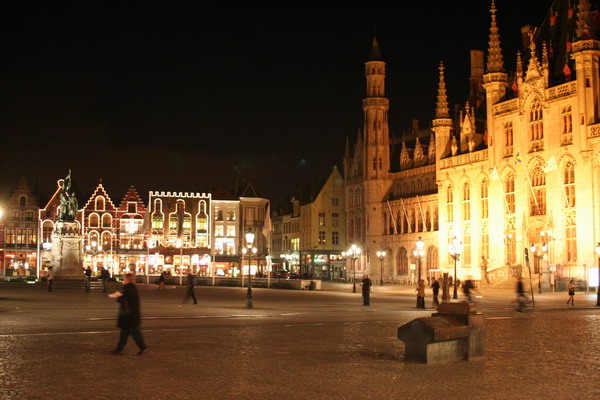
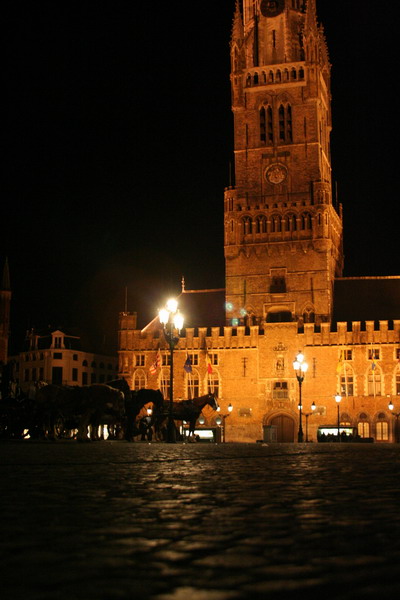
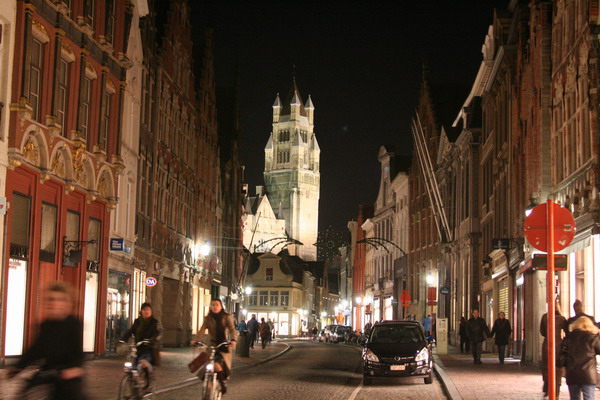
The next and final stop on the Tourist Train was the beach city of Oostende on the North Sea. We had a brief tour and stopped on the beach for a picnic lunch.
Since it was such a nice day and we had come all the way to sea, my mother and I decided to take a quick dip. Unfortunately, I was not dressed for it, but I still had to get in a little ways…
That concluded our whirlwind tour of Bavaria, Austria, Munich, Amsterdam, Luxembourg, and Belgium.
It was a great trip for all of us.
Until the next trip…
–Jim
Month: March 2007
Amsterdam–Family visit part two
This is the continuation of our trip through western Europe last week with my parents. In this post, we will travel to Amsterdam, Netherlands for a couple days of exploration.
As you probably are aware, the Netherlands is known for it’s bountiful windmills. This one greeted us on our way into town.
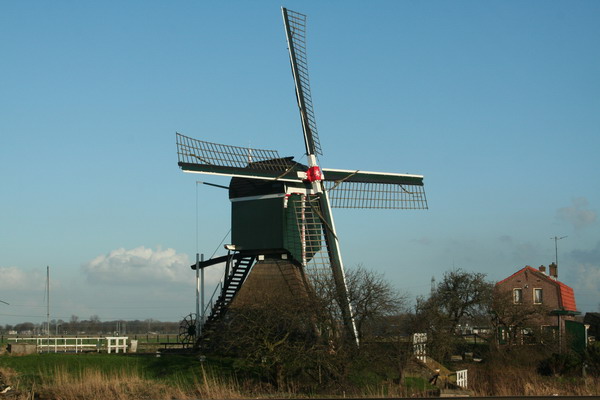
We began our exploration of Amsterdam with a walking tour. It’s a great city to tour by foot, or even better by bicycle. It was the most bicycles I’ve seen since we were in China.
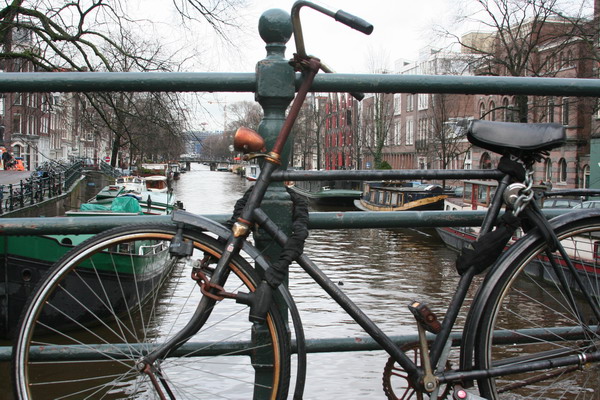
As you probably also know, most of Amsterdam is below sea level and their dikes regulate the water levels so that the canals flow in concentric half circles through the city.
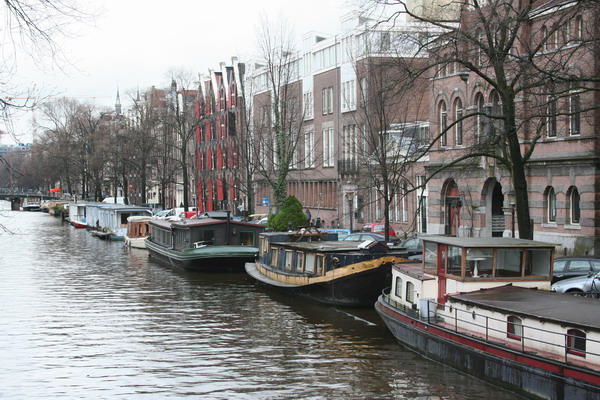
We watched this guy meander across the street.

The Netherlands is also very densely populated. It has about the same population as Florida, but is only about the same size as Maryland. So, suffice it to say that space is an issue. To solve that concern, there are many small vehicles there. Here’s just one example…
Again, let me stress that everyone rides a bike in Amsterdam. In fact, you can see people doing all kinds of interesting things as they ride along. It’s not uncommon at all to watch people talk on their cell phone and ride (how dangerous is that!?). This guy was actually typing an SMS message as he rode and hardly even looking up. Fortunately for him, the bike lanes are very wide…
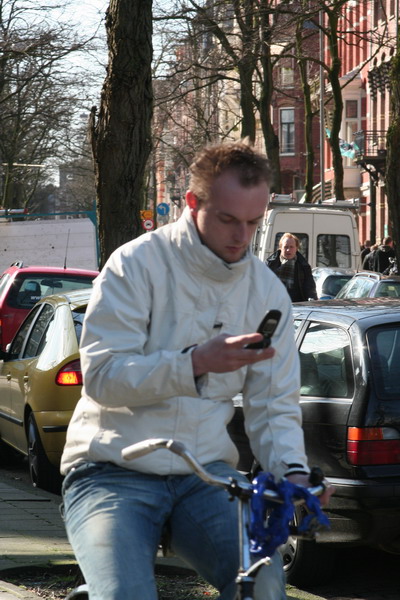
Next stop was the house/warehouse where a young Anne Frank and her family hid for 2 years in WWII (June 12, 1944 – August 1, 1944). It is a poignant memorial to the girl whose diary has been sold 25 million times in over 50 languages and is certainly considered one of the classics of the 20th century. It was her life goal to be a famous, published author. It’s sad it was posthumously achieved. However, she gave a face and story to the untold suffering of the millions caught in the Nazi web of persecution and concentration camps effecting the “final solution.”
Before we visited the secret annex of the Anne (and seven others), we watched the 1959 movie about her struggle that also won the best picture Academy Award.
This is the front side, which is the warehouse where her father owned a spice/preserve company. When the family decided to go into hiding, it was in a carefully guarded secret annex in the back.
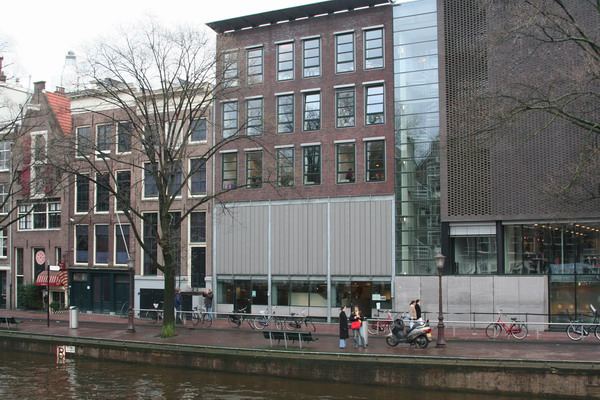
We also visited the Rijksmuseum Art and History museum. If you are a fan of the great Dutch masters like Rembrandt, Vermeer, Frans Hals or Jan Steen, this is the place to go. Unfortunately, pictures are not allowed inside, but the trees were just budding and a work of art themselves.
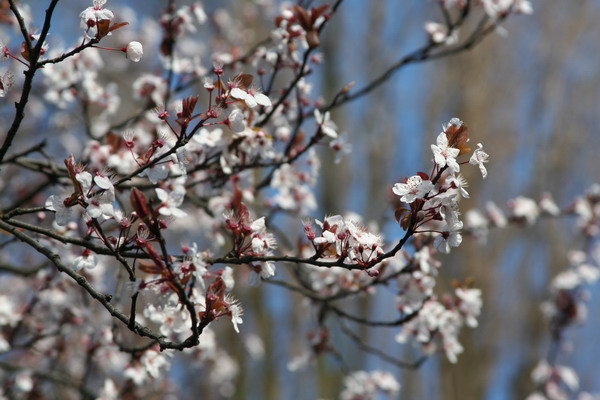
Here are some more of the quintessential Dutch items from the Netherlands:
Wooden shoes
Tulips
Heineken Beer
Windmills
Herring Sandwiches
Of course, there aren’t as many windmills anymore, and wooden shoes are still used as a long lasting work shoe, but these days are used more as a souvenir than practical footwear. That said, the other three are VERY common. We decided to sample a raw herring sandwich…
Yum…
Another fascinating trade often practiced in Amsterdam is diamond cutting and polishing. We toured one company to see how the process works.
This is the diamond being polished.
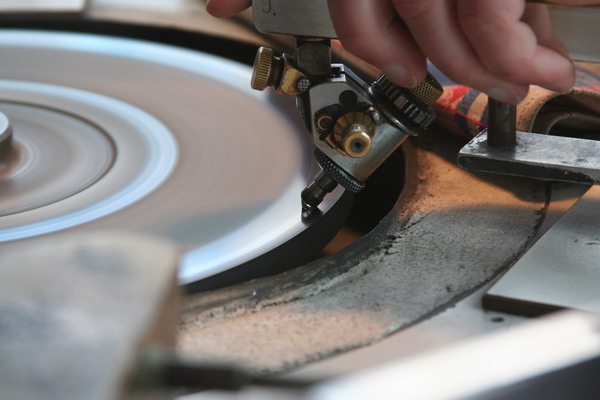
Then, he inspects each facet to ensure perfection.
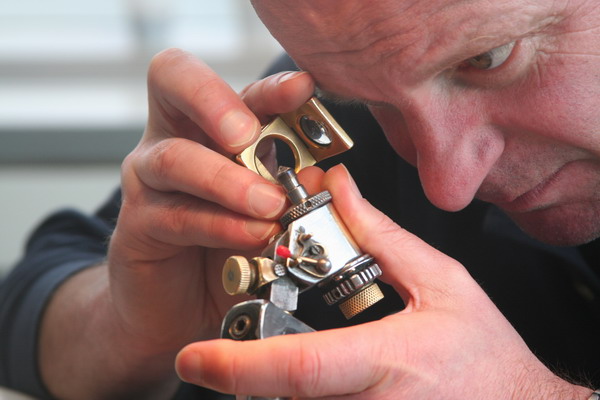
There were also other diamond colors like this black one.
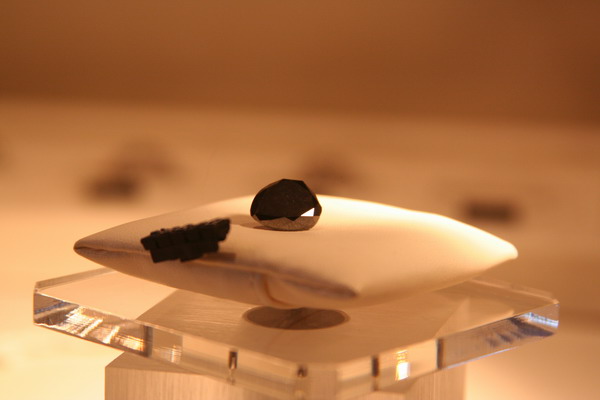
That night, we wandered through another famous part of Amsterdam, the Red Light district. It was a unique experience to wander through areas where the world’s oldest profession is on display legally and openly.
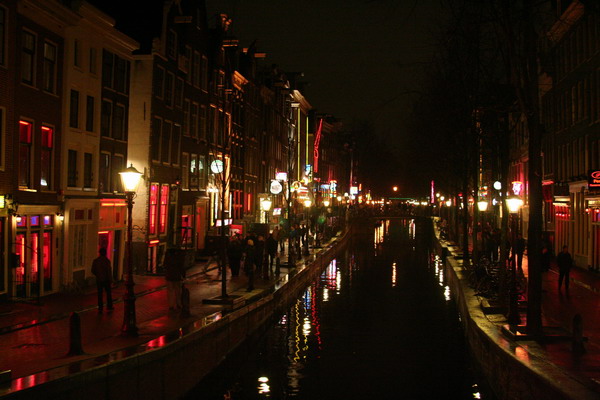
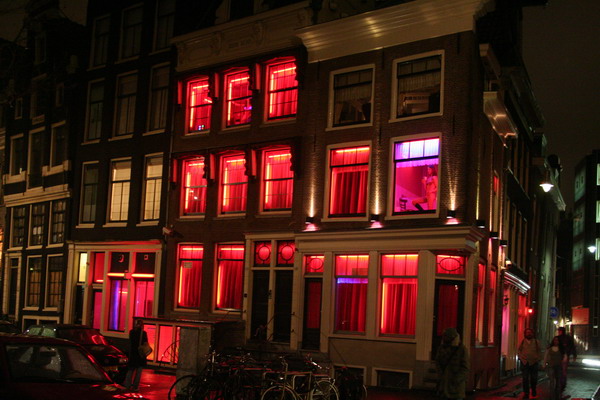
We also took a night cruise to see the canals first hand.
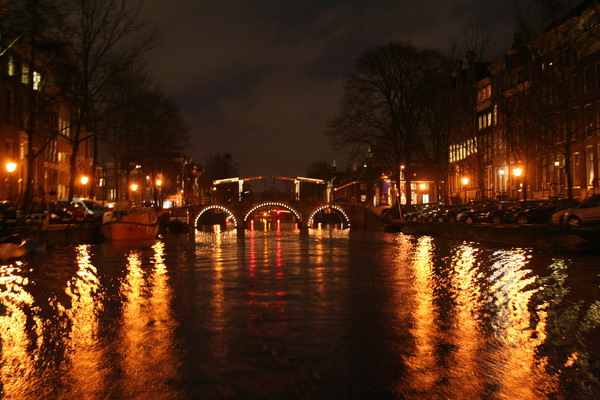
So, that completed our brief tour of the city of Amsterdam. Anna and I look forward to going again soon when the tulips are in bloom. Perhaps I will have some more images to share with you.
The next stops on our tour with my parents were Luxembourg and Belgium.
So, until then…
–Jim
Munich, Bavaria and Salzburg–Family visit part one
Last week Anna and I had the pleasure of hosting my parents for 9 days. During their visit here, we decided to escort them around to five countries: Germany, Austria, Luxembourg, Belgium and the Netherlands.
In this entry, we will take you to the castle homes of King Ludwig II, the location of the Sound of Music, and the childhood home of Wolfgang Amadeus Mozart. Finally, we will finish with the beautiful city of Munich (or München in German) where we had lunch at one of the most famous beer halls.
So, with that overview, off we go…
Once we picked up my parents at the Frankfurt Airport, early in the morning I might add, we drove the few hours to the mysterious and oft visited home of the 19th century Bavarian King Ludwig II.
This is the castle that was his childhood home.
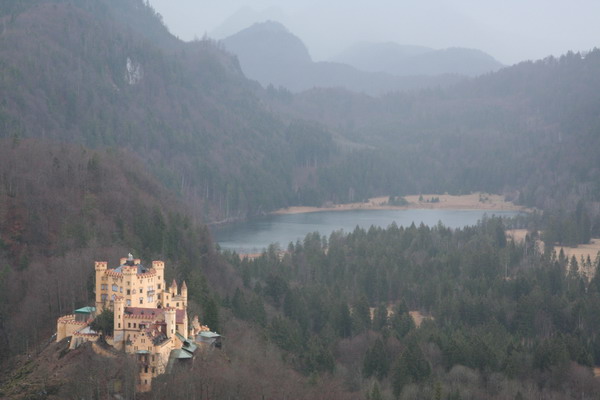
Here is my princess overlooking the castle.
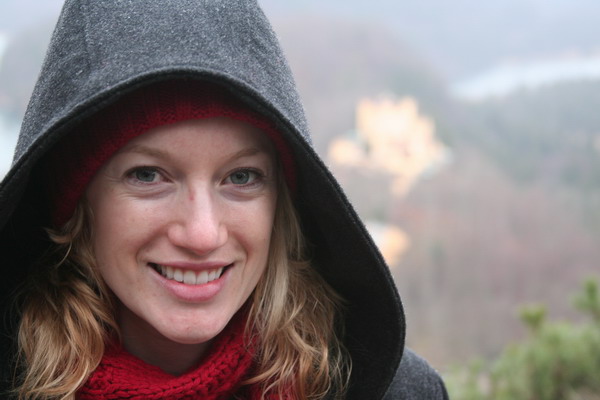
We began the day with a tour of the first castle, Hohenschwangau. This was the summer home of King Maximilian II (Ludwig’s father). Literally translated, it means Castle of the High Swan County and not surprisingly, the swan is its symbol. Maximilian discovered ruins on the current site (of a castle Napoleon had destroyed several decades previously) and had it rebuilt in the neo-gothic style.
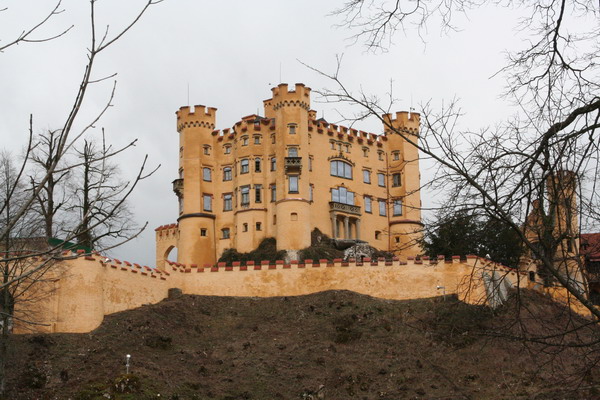
When King Ludwig II was faced with domestic problems, he turned to fanciful dreams of a new castle. After Bavaria’s defeat by Prussia in 1866, Ludwig was no longer the sovereign ruler of Bavaria. He looked upon the hills overlooking Hohenschwangau and imagined a better, more realistic medieval castle. This would be a place he could be a real king…
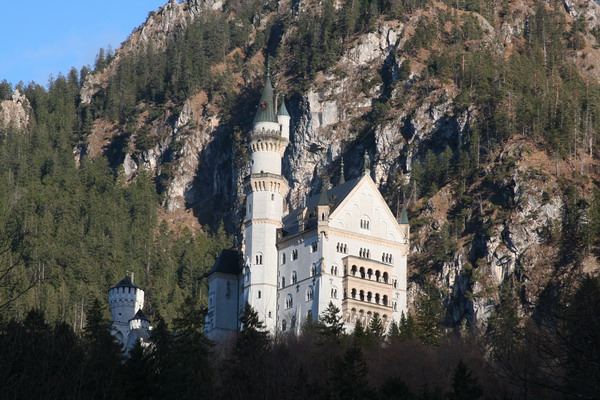
The outside is truly spectacular. The castle was begun in 1869 and construction continued for nearly 20 years. Unfortunately, the king only had the opportunity to live there for less than 2 years (1884-86), before he passed away. Even then, the inside was less than a third complete. But, less than two months later, the castle was opened to the public and has been an immensely popular tourist destination ever since. Over four and a half million people visit the castle each year. Since we came in the off-season, the lines were relatively short.
This bridge behind the castle is not only pretty, but offers a gorgeous panorama of the Neuschwanstein Castle.
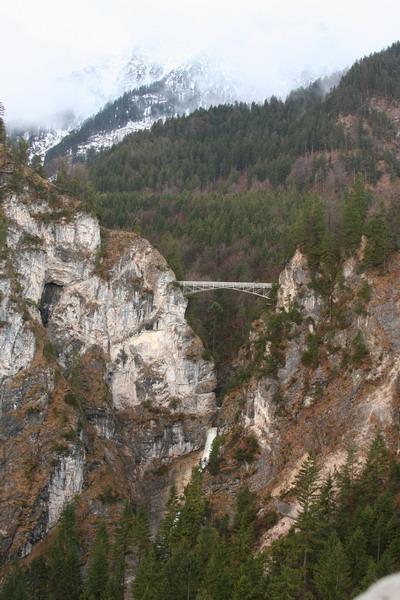
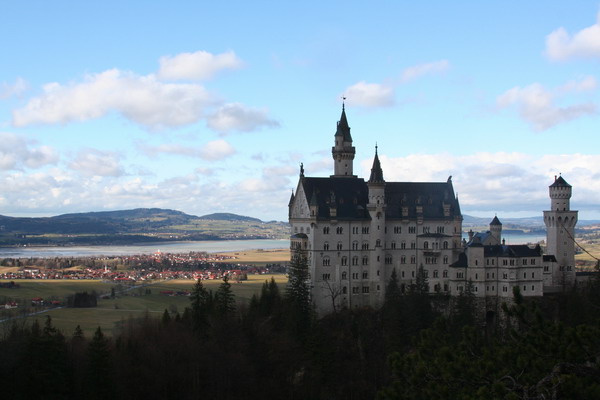
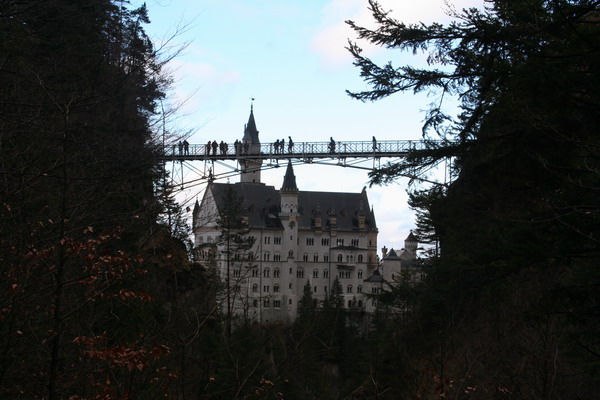
After our visit to the fairy tale king, we drove south to the village of Garmish.
Then, out to dinner at a very traditional Bavarian restaurant (at least we thought it was traditional). Here’s a nice image of my parents.
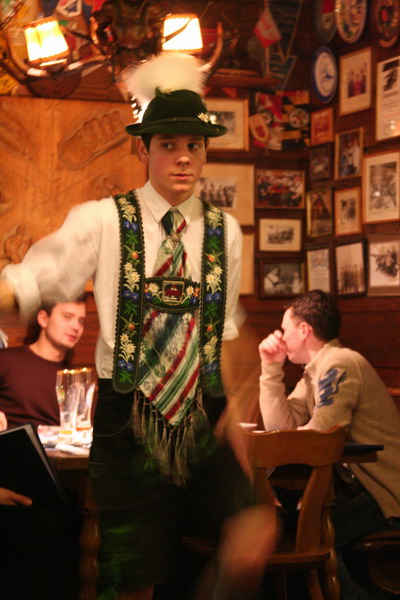
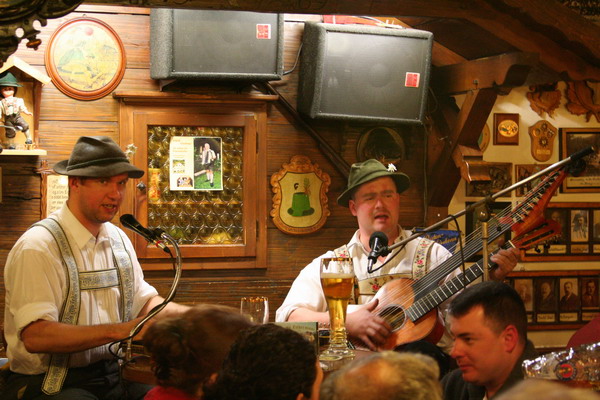
Then, just over the border into Austria and the home of the “Sound of Music.” The movie was one of my mother’s favorites when she was a girl, so we decided to spend the afternoon seeing where the movie was filmed throughout the city and surrounding countryside. It also afforded us a convenient way to see the city and area.
We began with the courtyard where Maria and the children learned the Do-Re-Me song. This statue wasn’t in the movie, but another one like it was.
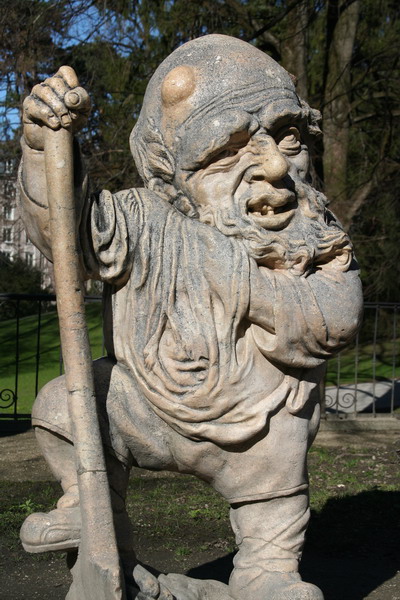
This is that same courtyard.
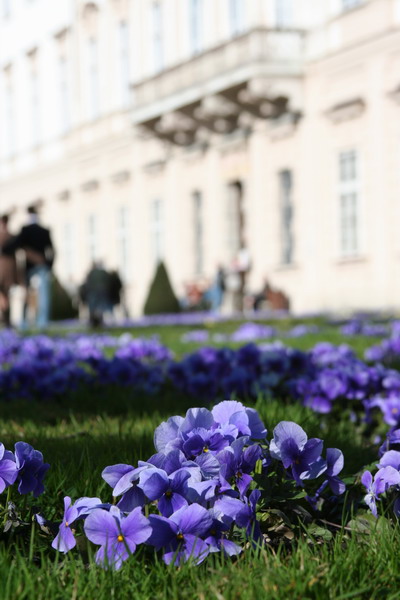
This is the abbey where Maria lived before she lived with the Von Trapp family.
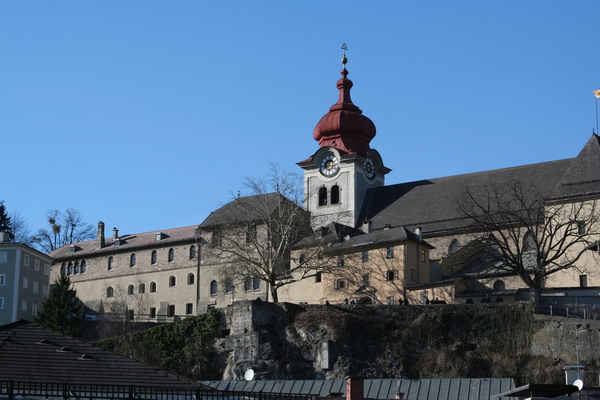
Speaking of the Von Trapps, this was the outside of their house in the movie. All of the interior scenes in the movie were shot on a set in Hollywood, and the rest were shot in Salzburg and the surrounding areas.
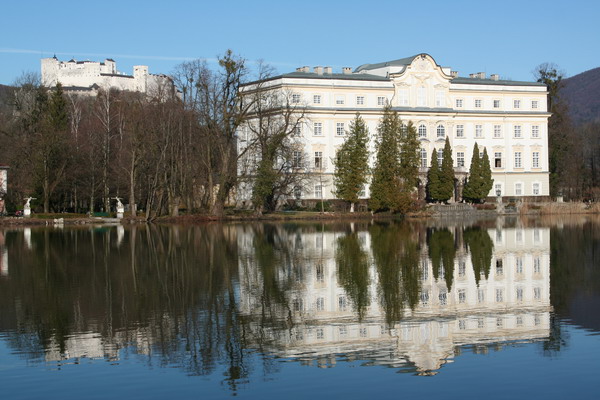
This gazebo used to be on the same grounds, but was moved to a nearby park when too many people were sneaking onto the property to see the site of the “sixteen going on seventeen” song. Of course, the same people also wanted to jump from bench to bench, just like the movie. That resulted in many broken glass panes and some broken bones.
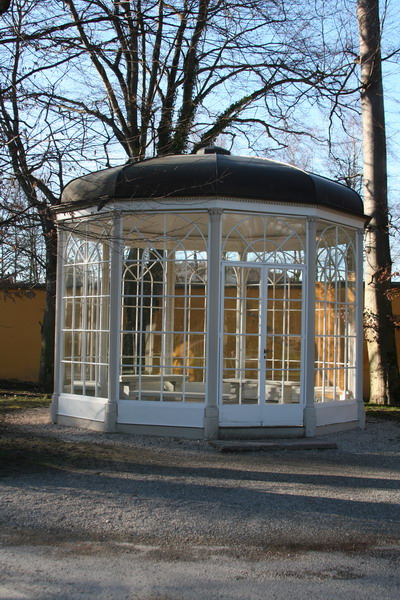
This is another castle in the area. This one is actually just a private residence.

These are where the hills are alive with the sound of music. Unlike the movie though, this is actually a 30 minute drive away from Salzburg.
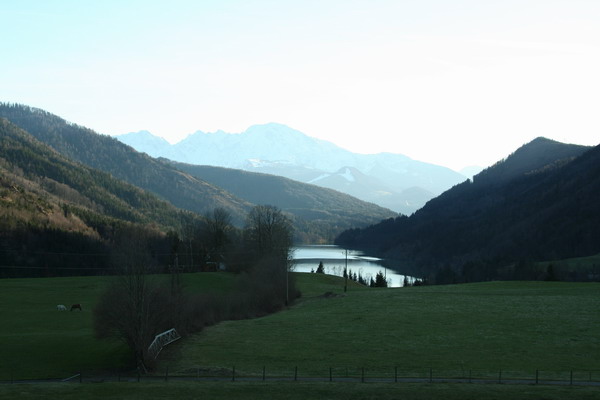
Here’s another random location. This is the world headquarters of the energy drink company, Red Bull. Apparently, when the hills are alive with the sound of music, it also gives you wings…
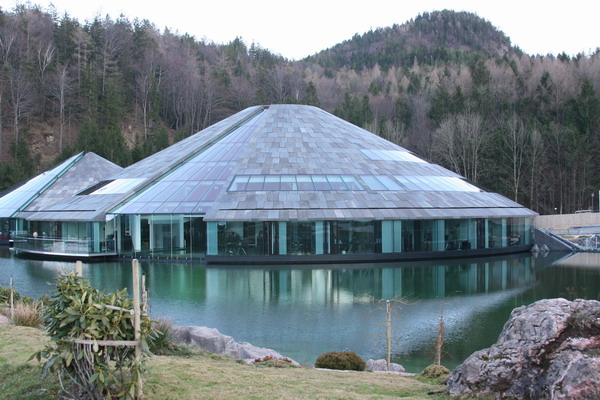
If you’ve seen the movie, you will recognize this village from the opening scene.
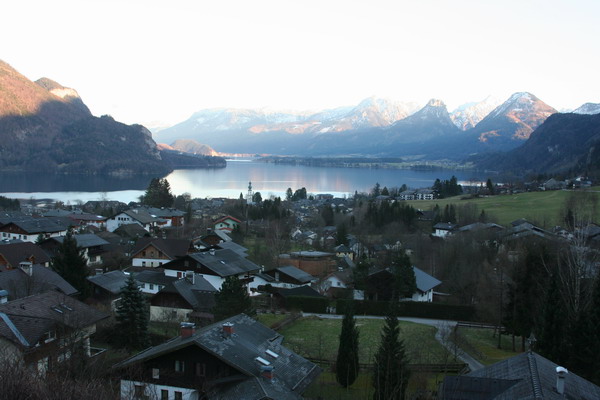
This is the inside of the church that the baron and Maria were married in.
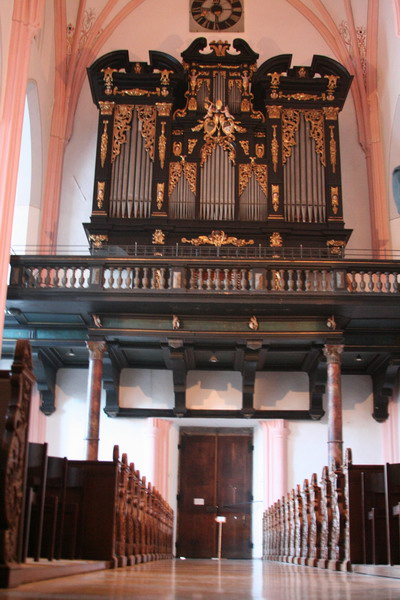
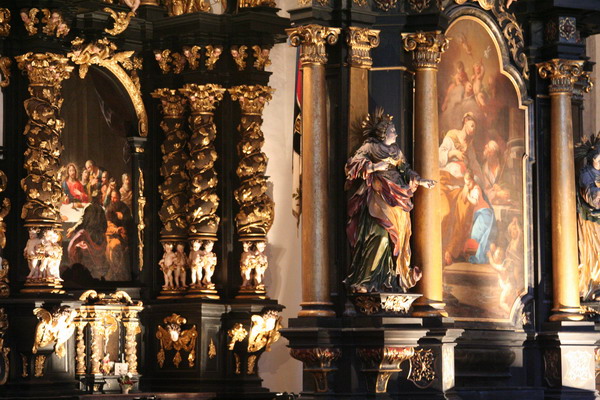
Since no visit to Salzburg would be complete without some homage to its most famous son, we decided to see a dinner concert playing Mozart’s music (complete with a quintet and a pair of opera singers).
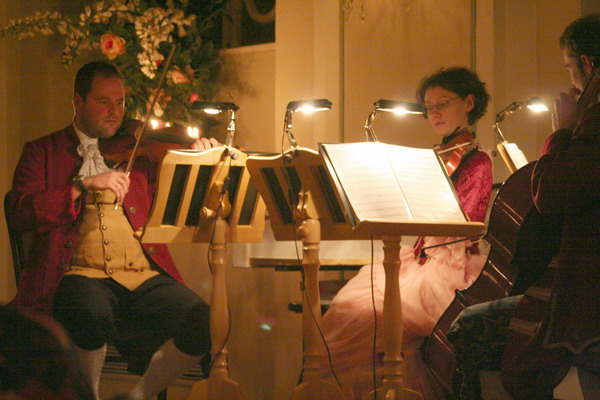
The 18th century ballroom in which it was performed was also quite lovely.
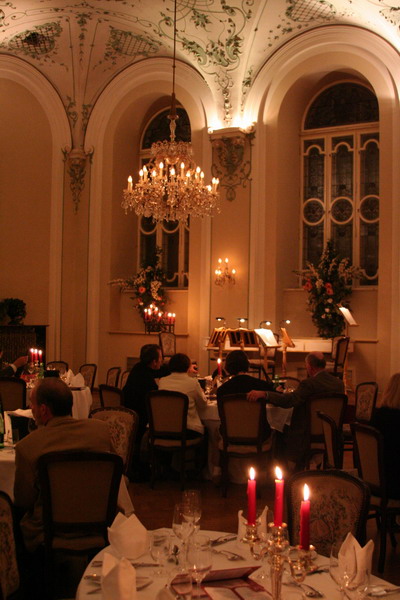
The next day was to Munich. On the way, we also stopped by Dachau. Unfortunately, we don’t have any images, but just being there was a very powerful experience. If you are not familiar with the name, it was one of the first concentration camps of WWII. While it was much smaller than some others like Auschwitz in Poland, with only 32,000 killed, it was a training ground for many others. We were very impressed that this monument exists. Many cultures want to erase any black marks on their history. In this case, it’s a tribute to the German culture. By not letting these atrocities slip out of the collective culture, they hope to prevent it from happening again.
After our sobering visit, we made our way into downtown Munich to take in the sights. Marienplatz is the main square. In it, there is the Grand Glockenspiel.
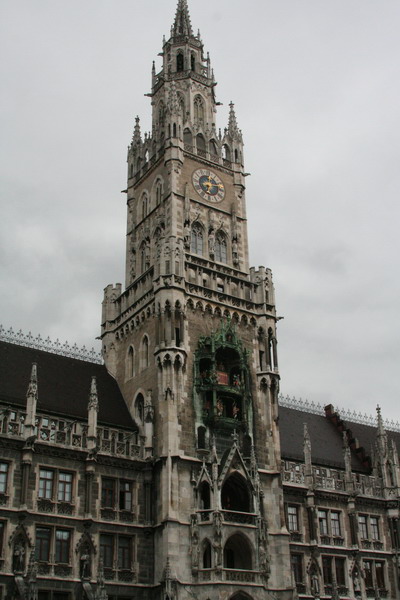
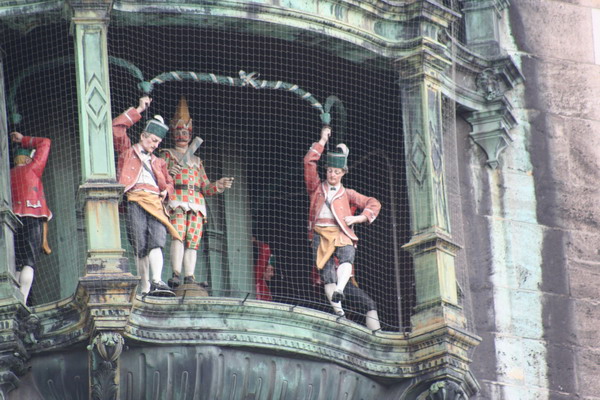
When lunchtime came around, we decided to try the most famous beer
hall in the world, the Hofbräuhaus. As you can see, it’s quite large (can accommodate up to 3,000 people at a time) and has been in operation since 1607.
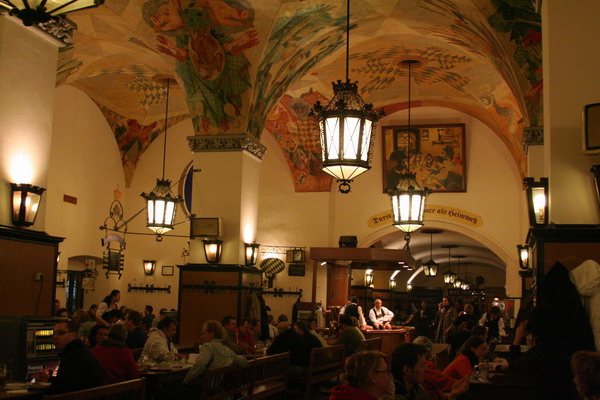
The tables close to the music were also for regulars. So, if you go and want to sit close to the entertainment, don’t be surprised if one of the regulars joins you at the table.
The music was lots of fun and very lively.
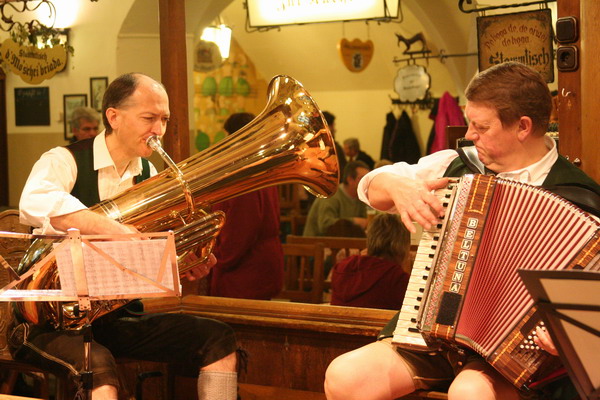
The main attraction here though is the Munich beer, and it is served in copious amounts.
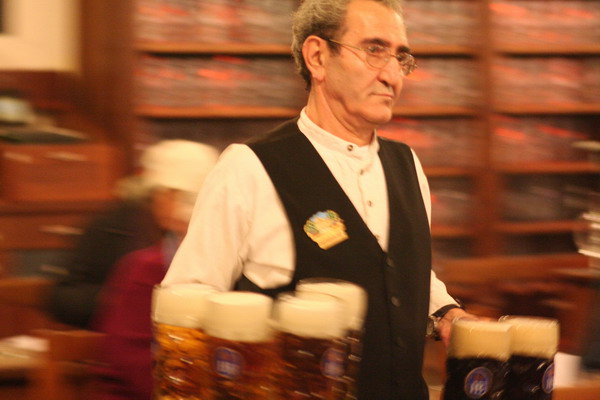
Then, it was back in the car for our drive home. It was a great start to the visit. We took several more trips while my parents were here. I will cover those in the next post. So, until then…
–Jim

